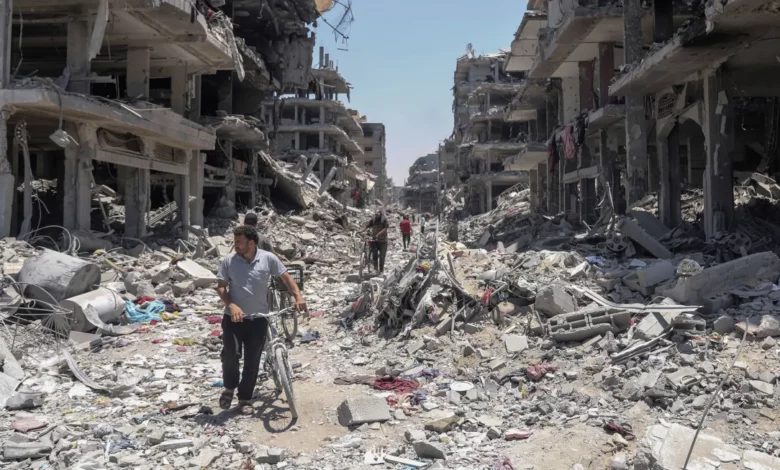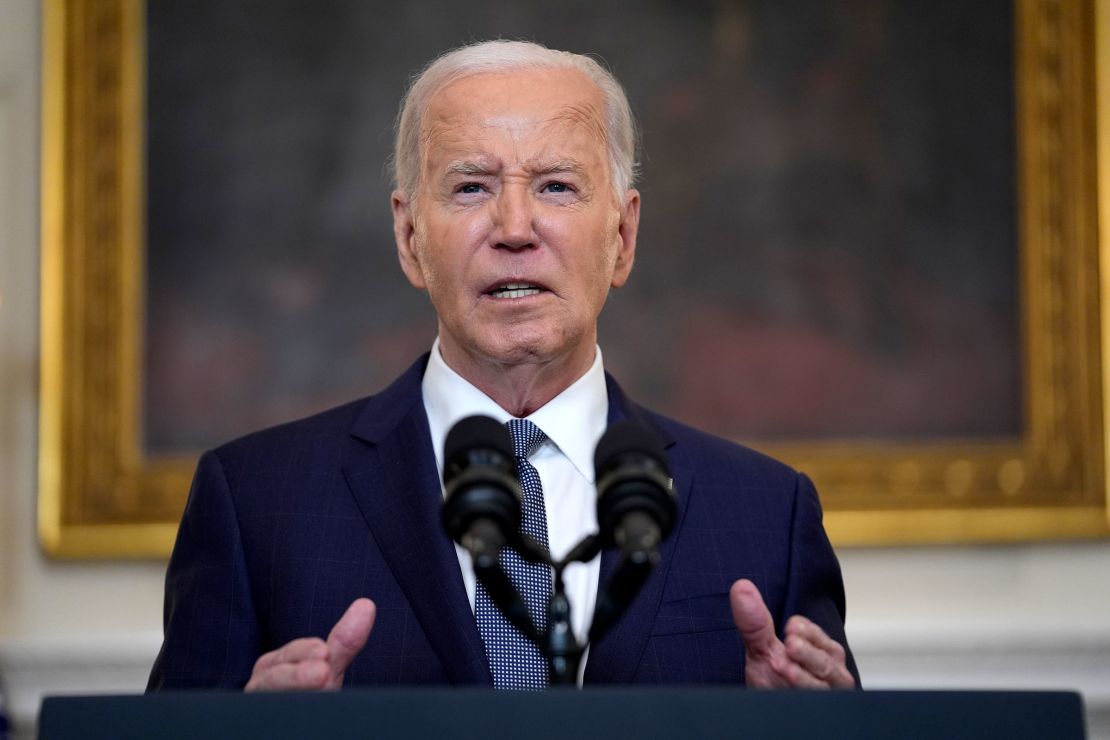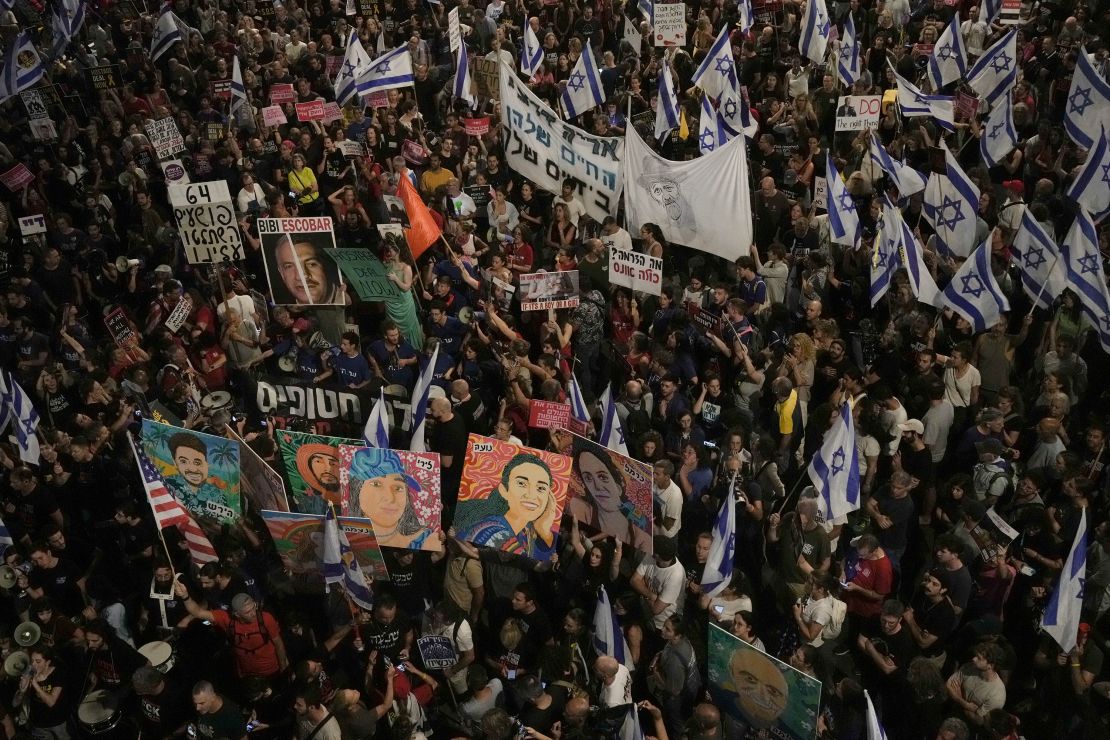
Editor’s Note: Peter Bergen is CNN’s national security analyst, a vice president at New America, a professor of practice at Arizona State University and the host of the Audible podcast, “In the Room,” also on Apple and Spotify. He is the author of “The Rise and Fall of Osama bin Laden.” The views expressed in this commentary are his own. Read more opinion on CNN.
It’s taken more than half a year, but, finally, President Joe Biden has publicly unveiled an Israeli plan that could end the bloodshed in Gaza.
Generally, there are two ways to make peace; one is the total capitulation of the enemy, which happened after the United States dropped atomic bombs on Hiroshima and Nagasaki and Japan surrendered, so ending World War II. The other is that the combatants recognize a “mutually hurting stalemate” as a prelude to making a deal, which is surely where we are in Gaza today.
But getting the two sides to actually agree to — and implement — the peace plan is far from a certainty. The fact that the terms of the deal were announced could even be a bad sign, since in sensitive negotiations terms are often kept secret until there is a firm deal.
Also, the military leader of Hamas, Yahya Sinwar, who is ultimately calling the shots on the Hamas side, and Israeli Prime Minister Benjamin Netanyahu both have their own reasons for possibly prolonging the conflict; Sinwar because every dead Gazan civilian chips aways at Israel’s standing in the world, while Netanyahu faces domestic political challenges that would likely only multiply the day after the guns fall silent.
Yet, the Israelis are unlikely ever to achieve Netanyahu’s goal of “total victory” over Hamas. US intelligence estimates that only about a third of Hamas fighters have been killed after seven months of war, according to Politico, while a total of some 36,000 Palestinians have already been killed in the war, according to the Gaza Health Ministry. (Other estimates have suggested that the number is at least 24,000 killed. In any event, the death toll has been large.)
For Netanyahu to achieve total victory would require fighting a seemingly endless war with untold more tens of thousands of dead Palestinians and Israel’s increasing isolation around the world—some 140 countries now recognize a Palestinian state, while the International Criminal Court is considering an arrest warrant for the Israeli prime minister.
As the Gaza war continues, Israel’s dreams of normalization with the Arab world will steadily erode. Crucially, the war is also steadily losing support with Israel’s most important ally, the United States. Support for the Gaza war among Americans has dropped from 50% at the beginning of the war in November to 36% in March, according to Gallup. (Facing a close election in November, Biden and his team are also surely well aware that the evaporating support for the Gaza war harms their chances in swing states like Michigan.)
The public criticism of Netanyahu in March by US Senate Majority Leader Senator Chuck Schumer, a Democrat, was a canary in this particular mine. The highest-ranking elected Jewish-American official in the history of the US, Schumer has long been an ironclad supporter of Israel.
Still, speaking on the Senate floor, Schumer condemned Netanyahu, saying he “has shown zero interest in doing the courageous and visionary work required to pave the way for peace, even before this present conflict.”
Schumer, in effect, was warning the Israelis that the bipartisan American coalition that had helped to sustain Israel since President Harry Truman first recognized the Jewish state was fracturing. In the long term, that would be very bad for Israel since the young Americans protesting the Gaza war today are tomorrow’s middle-aged voters.

Netanyahu also keeps fighting the Gaza war with no real plan for the “day after,” in short, without a strategy. Revenge is not a strategy and as Sun Tzu noted a long time ago; “Tactics without strategy is the noise before defeat.”
Meanwhile, Hamas can keep fighting the war and can help to turn Gaza into a Mad Max-style apocalypse, while the Gazans it’s purportedly fighting for are succumbing to spreading famine and dying in ever-larger numbers. To rework a quote from Tacitus, Hamas fighting on indefinitely only to turn Gaza back into a desert is not what anyone can call peace or victory.
So now comes Biden’s Friday unveiling of the Israeli peace plan. Crucially, that plan was announced in Washington, not in Tel Aviv, giving it the endorsement of Israel’s closest ally. Hamas has since issued a statement they view the plan positively.
Confusingly, on Saturday, the Israeli prime minister’s office released a statement that “the destruction of Hamas” had to take place “before a permanent ceasefire is put in place.” This could be explained by the fact that public statements for domestic consumption during sensitive negotiations may differ from private positions or it may indicate that Netanyahu really isn’t on board with the peace plan. Still, it’s hard to imagine that the President of the United States would announce an Israeli peace plan that hadn’t, you know, been cleared by the Israelis.
The time is ripe for such a peace plan because the Biden administration assesses that Hamas has been degraded to the point it can no longer carry out another operation like the attack on Israel that killed some 1,200 people on October 7th while its leaders are either dead or hiding deep underground in Gaza.
“I don’t think this offer would have been possible three months ago,” a senior Biden administration official said in a background press call on Friday.

The peace plan is well-constructed to achieve an immediate ceasefire and build on that for a lasting cessation of hostilities. The first phase of the plan would start with a six-week ceasefire and the release of an unspecified number of hostages — both those alive and the bodies of those who are dead — in exchange for the release of hundreds of Palestinian prisoners held by Israel and the withdrawal of Israeli soldiers from the populated areas of Gaza.
Importantly, the plan would also allow for the entry of 600 trucks of aid per day — exceeding the approximately 500 trucks a day that were entering Gaza before the war started. Aid to Gaza has slowed to a trickle of only 58 trucks a day on average in recent weeks, according to the UN.
The second phase of the plan would secure a final end to the fighting and the return of all the hostages, including the male Israeli soldiers who are held by Hamas, and the total withdrawal of Israeli soldiers from Gaza. The initial ceasefire can continue beyond the six-week phase if Hamas and Israel continue to negotiate through Qatar, Egypt and the US to finalize the permanent ceasefire, which would then lead to a third phase: the multiyear reconstruction of Gaza.
While there are clearly many “what ifs” in this plan, and it may not satisfy spoilers like the right-wingers in Netanyahu’s government or some of the hard core of Hamas, the enemy of the perfect deal is not the reasonably OK deal. And this is a sufficiently OK deal for both sides. Otherwise, the war will rage on without end with all that implies for the people of Gaza and, ultimately, for the state of Israel.




